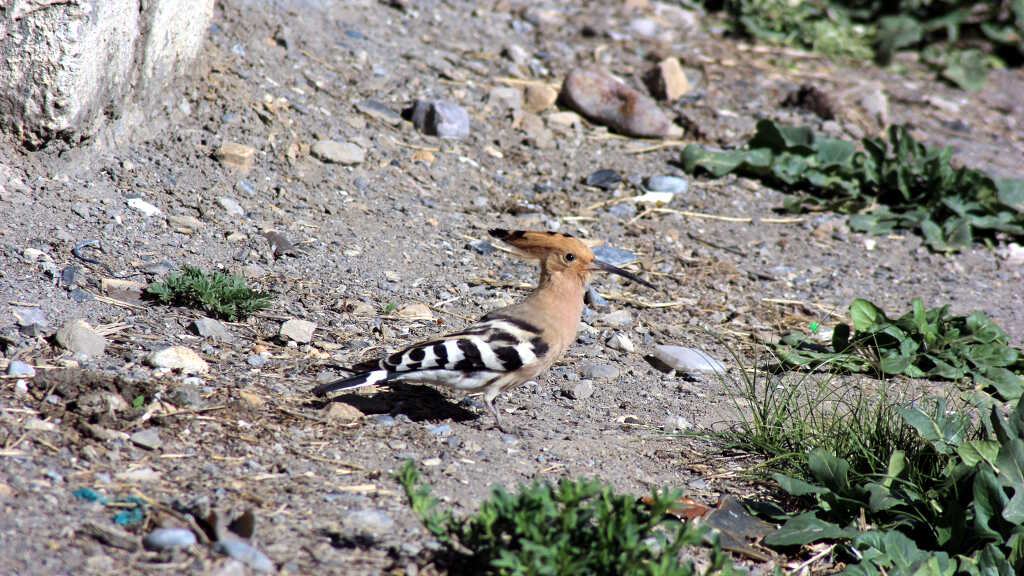
Upupa epops (Common Hoopoe)
The Common Hoopoe (Upupa epops) is a distinctive bird known for its striking crown of feathers and elegant flight pattern. In the Great Himalayan National Park (GHNP), this bird adds a splash of charm with its bold appearance and curious behavior. With its cinnamon-brown body, zebra-striped wings, and a long, curved bill, the Common Hoopoe is easily recognizable, even from a distance.
Physical Features and Behavior
The Common Hoopoe has a prominent crest that fans out dramatically when alarmed or excited. Its long, slender bill is used to probe soil and leaf litter in search of insects, grubs, and larvae—its primary diet. Though usually solitary, hoopoes can be seen in pairs during the breeding season, often in open woodlands, meadows, and near agricultural fields.
Habitat in GHNP
In GHNP, the Common Hoopoe is typically spotted in lower-altitude zones, especially around open clearings, village edges, and degraded forests. Its adaptability to human-modified landscapes makes it a regular sight near farmlands and forest edges. Despite being shy, it can often be observed dust-bathing or sunning itself in open spaces.
| Common name | Common Hoopoe |
| Scientific name | Upupa epops |
| Family | Upupidae |
| Description | A fawn coloured bird with black and white Zebra markings on back, wings and tail. A conspicuous fan-shaped crest and long, slender, gently curved bill. Sexes alike. Singly or pairs, usually on the ground in lightly-wooded country. Practically throughout the Indian Union. Affects open country, plains and hills up to about 2000 m elevation. It is migratory bird and it migrates upto the altitude of 4200m (Kibber Wildlife Sanctuary, Spiti Valley) Found of lawns, gardens and groves in and around villages and towns. Walks and runs with a quail-like nut waddling gait, probing into the soil for good with bill partly open like forceps. When digging, the crest is folded back and projects in a point behind the head. It is flicked open and erected fanwise from time to time. Insects, grubs and pupae; hence is beneficial to agriculture. |
Ecological Role and Adaptability
The Common Hoopoe in the Great Himalayan National Park plays a vital ecological role by controlling pest populations. Its foraging habits help in maintaining a balanced ecosystem. The bird is also a cultural symbol in many parts of India, often associated with wisdom and mystery.
Conservation Status
Classified as a species of Least Concern by the IUCN, the Common Hoopoe is widespread and relatively stable in population. In GHNP, it benefits from the protected environment and the biodiversity-friendly policies of the park.
Conclusion
The Common Hoopoe (Upupa epops) is more than just a visual delight in the Great Himalayan National Park—it is a valuable insectivore that enriches the park’s biodiversity. Observing this bird in the wild is a reminder of how even familiar species have vital roles in the ecosystem.



